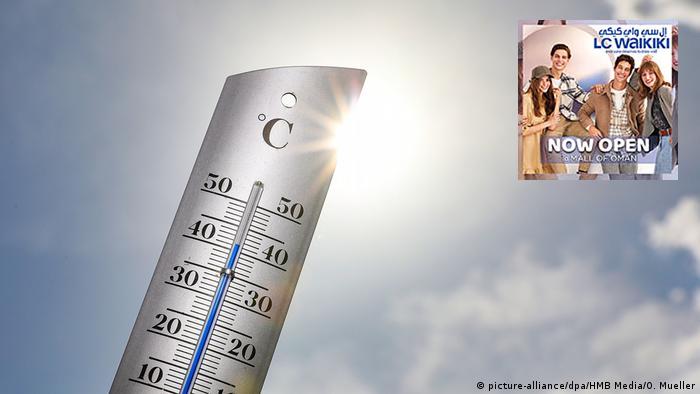
Time is running out. The scale of action we need to protect the climate is huge, it has to happen fast, and the plans on the table are falling short.
In 2015, almost all of the world's nations agreed to limit the temperature increase to 2 degrees Celsius (3.6 F) above preindustrial levels, and to aim for a limit of 1.5 C under the Paris Agreement. So far, the actual commitments made to cut fossil fuel use and other measures to reduce emissions of greenhouse gases into the atmosphere — if carried through — will only get us down to 2.7 C of warming, the UN has warned.
At the end of this month, world leaders will meet in Glasgow for the 26th edition of the UN Climate Change Conference. And the pressure is on to come up with much more radical measures to meet the Paris target.
But what difference does a fraction of a degree make? Well, a lot, according to the vast body of scientific research being done globally to assess the impacts of climate change.
With climate-induced disasters already happening across the globe, the scale of the problem can seem unmanageable. Yet while science does paint a bleak picture, it also shows that limiting warming by what seems like a tiny amount can save many millions of lives, protect vast areas of land from degradation and give other species a chance of survival.
According to the Intergovernmental Panel on Climate Change's (IPCC) latest report, released in August, the global temperature has already risen by 1.07 C since the industrial revolution. And we can already see that just 1 degree of warming has had a massive impact.
Every centimeter of sea-level rise could put millions at risk
Take sea-level rise. So far, we've pushed the average global sea level up by about 20 centimeters (7.9 inches) since 1901, according to the IPCC.
That might not sound like much, but it's already forcing people from their homes all over the world. According to the Internal Displacement Monitoring Centre, hundreds of thousands of people are being displaced every year by floods in low-lying areas of Bangladesh.
But what difference does a fraction of a degree make? Well, a lot, according to the vast body of scientific research being done globally to assess the impacts of climate change.
With climate-induced disasters already happening across the globe, the scale of the problem can seem unmanageable. Yet while science does paint a bleak picture, it also shows that limiting warming by what seems like a tiny amount can save many millions of lives, protect vast areas of land from degradation and give other species a chance of survival.
According to the Intergovernmental Panel on Climate Change's (IPCC) latest report, released in August, the global temperature has already risen by 1.07 C since the industrial revolution. And we can already see that just 1 degree of warming has had a massive impact.
Every centimeter of sea-level rise could put millions at risk
According to data-driven climate website Carbon Brief, which analyzed 70 peer-reviewed scientific studies in 2018, with 1.5 C of warming, we're looking at a global sea-level rise of 48 centimeters by the end of this century, compared to 56 centimeters if we hit 2 degrees.
And just 8 centimeters means all the difference for millions of people. According to the IPCC, every 10 centimeters of sea-level rise affects up to another 10 million people around the world.
A little bit of warming means a lot of rain
The latest IPCC report says the kind of "extreme rainfall event" that, before the industrial revolution would occur once every 10 years, is now happening about 30% more often. At 1.5 degrees of warming, the risk goes up by 50% — and the severity of the event increases too, becoming 10.5% wetter. At 2 degrees, such an event becomes 70% more likely, and 14% wetter.
For a country like India, this means a very different future. According to insurance firm Munich Re, floods and landslides caused over 700 deaths and $11 billion (€9.5 billion) in damage over 2018 and 2019.
According to Carbon Brief, with 1.5 C of warming, the economic damage from flooding in the country would increase more than three and a half times, and at 2 degrees, nearly five and a half times.
Longer, drier droughts
While some regions of the planet will get wetter, others will get drier, with equally catastrophic results. In 2018, the IPCC said limiting global warming to 1.5 C compared to 2 C could mean half as many people exposed to water stress.
In its latest report, the IPCC says what would have been once-a-decade droughts before the Industrial Revolution are now 70% more likely. At 1.5 C they become twice as frequent, and at 2 degrees, they will happen 2.4 times as often.
According to Carbon Brief, globally, the average length of a drought goes up by two months with 1.5 degrees of warming, by four months at 2 degrees, and a whopping 10 months at 3 degrees of warming.
If these figures are mind-boggling, the human cost of these apparently small increments in warming is almost impossible to comprehend. The lives destroyed, hunger, homelessness and poverty, mean unquantifiable suffering. And they will exacerbate or precipitate political tensions in ways we can't predict, leading to conflicts we can still only guess at.
What we do know for sure, is that when it comes to climate change, apparently small numbers can make all the difference.